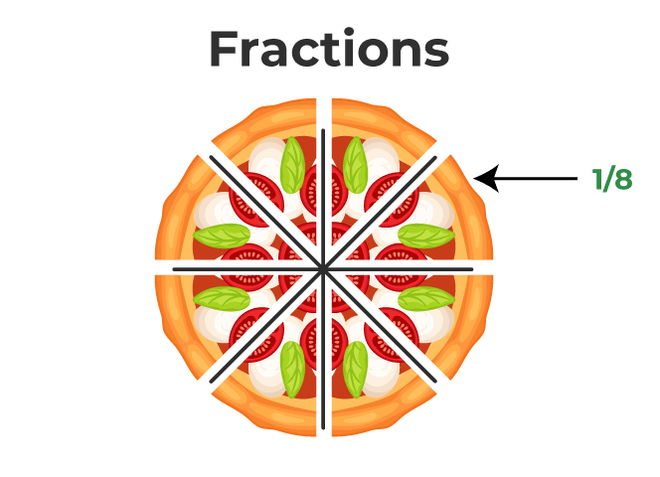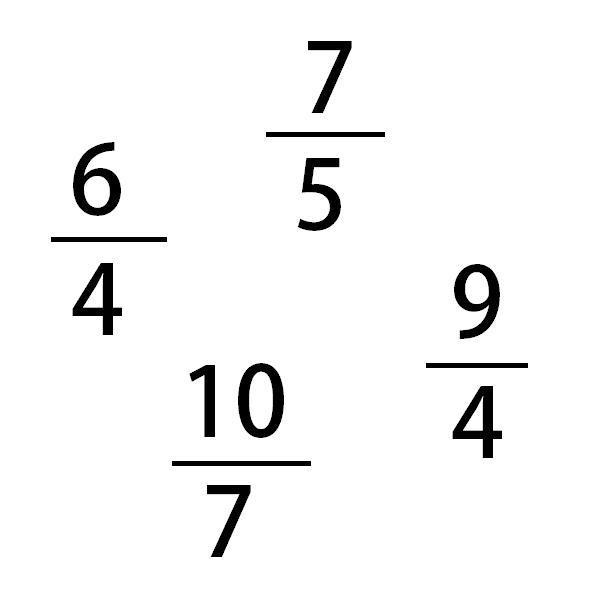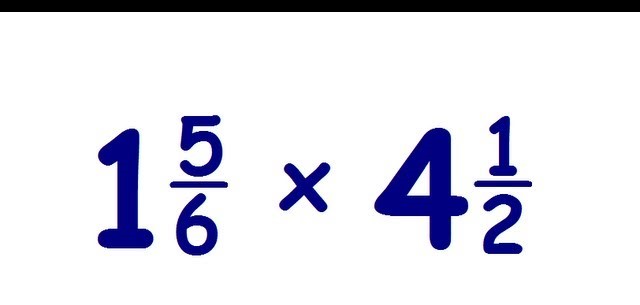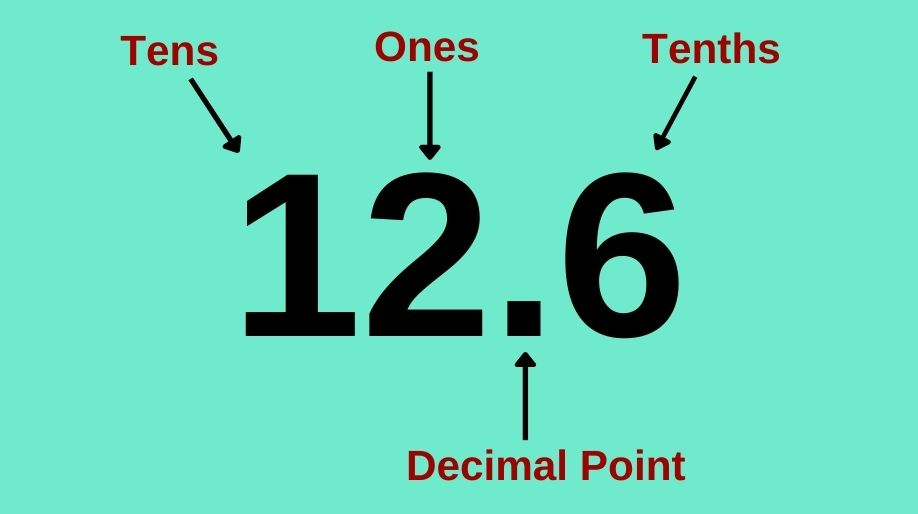Basic Operations On Fractions
a) Equivalent Fractions
Equivalent fractions are fractions that represent the same value despite having different numerators and denominators.
A fraction remains equivalent if the numerator and the denominator are multiplied or divided by the same number.
Example:
Consider the fractions \( \frac{2}{4} \) and \( \frac{3}{6} \). These fractions may appear different, but they represent the same portion of a whole.
Determining Equivalent Fractions
To determine if two fractions are equivalent, we check if they represent the same value. This can be achieved by cross-multiplying and comparing the products.
For \( \frac{2}{4} \) and \( \frac{3}{6} \):
\( 2 \times 6 = 12 \) and \( 3 \times 4 = 12 \)
Since the products are equal, the fractions \( \frac{2}{4} \) and \( \frac{3}{6} \) are equivalent.
b) Simplification of Fractions
A fraction is written in its simplified form if the numerator and the denominator have no common factor. In other words, it is impossible to find a number that is a divisor to both the numerator and the denominator in a fraction’s simplified form.
Example:
Let's simplify the fraction \( \frac{12}{24} \).
Step 1: Determine the Greatest Common Divisor (GCD)
To simplify a fraction, we first identify the greatest common divisor (GCD) of the numerator and the denominator. The GCD is the largest number that divides evenly into both numbers.
Factors of 12: \(1, 2, 3, 4, 6, 12\)
Factors of 24: \(1, 2, 3, 4, 6, 8, 12, 24\)
The common factors of 12 and 24 are \(1, 2, 3, 4\), and \(6\). The greatest among these is \(12\).
Step 2: Divide Numerator and Denominator by the GCD
We divide both the numerator and the denominator of the fraction by the GCD (\(12\)) to simplify the fraction.
\[\frac{12}{24} = \frac{12 \div 12}{24 \div 12} = \frac{1}{2}\]
Therefore, the simplified form of \( \frac{12}{24} \) is \( \frac{1}{2} \).
Techniques for Simplifying Fractions:
1. Greatest Common Divisor (GCD): Identify the largest number that divides evenly into both the numerator and the denominator.
2. Prime Factorization: Express both the numerator and the denominator as products of their prime factors, then cancel out common factors.
3. Division Method: Continuously divide both the numerator and the denominator by their common factors until further simplification is unattainable.
Example
Simplify the following fractions:
\( \frac{18}{36} \)
Solution:
\( \frac{18}{36} \):
Factors of \(18\): \(1, 2, 3, 6, 9, 18\)
Factors of \(36\): \(1, 2, 3, 4, 6, 9, 12, 18, 36\)
GCD = \(18\)
\[\frac{18}{36} = \frac{18 \div 18}{36 \div 18} = \frac{1}{2}\]
c) Fraction Addition
Addition of fractions is a fundamental operation in mathematics, allowing us to combine fractional quantities or parts of a whole.
Example:
Let's add the fractions \( \frac{3}{5} \) and \( \frac{2}{3} \).
Step 1: Finding a Common Denominator
To add fractions, we need to ensure they have the same denominator. If the fractions already share a common denominator, we proceed to the next step. Otherwise, we find the least common multiple (LCM) of the denominators to obtain a common denominator.
Denominators: 5 and 3
LCM of 5 and 3 = 15
Step 2: Adjusting the Fractions
We rewrite each fraction with the common denominator of 15.
\( \frac{3}{5} \) becomes \( \frac{9}{15} \) by multiplying the numerator and denominator by 3.
\( \frac{2}{3} \) becomes \( \frac{10}{15} \) by multiplying the numerator and denominator by 5.
Step 3: Adding the Adjusted Fractions
Now that both fractions have the same denominator, we add their numerators.
\( \frac{9}{15} + \frac{10}{15} = \frac{9 + 10}{15} = \frac{19}{15} \)
Since the numerator is greater than the denominator, we can express the result as a mixed number:
\( \frac{19}{15} = 1 \frac{4}{15} \)
Therefore, \( \frac{3}{5} + \frac{2}{3} = 1 \frac{4}{15} \).
Techniques for Adding Fractions:
1. Finding a Common Denominator: Ensure that all fractions have the same denominator before adding.
2. Adjusting Fractions: Modify fractions by multiplying both the numerator and denominator to obtain a common denominator.
3. Adding Numerators: Add the numerators of the adjusted fractions while keeping the common denominator unchanged.
Examples
Add the following pairs of fractions:
a) \( \frac{1}{4} + \frac{3}{8} \)
b) \( \frac{2}{3} + \frac{5}{6} \)
Solution:
a) \( \frac{1}{4} + \frac{3}{8} \)
Common denominator: \(4 \times 8 = 32\)
Adjusted fractions: \( \frac{8}{32} + \frac{12}{32} \)
Sum: \( \frac{8 + 12}{32} = \frac{20}{32} \)
Simplified: \( \frac{20}{32} = \frac{5}{8} \)
b) \( \frac{2}{3} + \frac{5}{6} \)
Common denominator: \(3 \times 6 = 18\)
Adjusted fractions: \( \frac{12}{18} + \frac{15}{18} \)
Sum: \( \frac{12 + 15}{18} = \frac{27}{18} \)
Simplified: \( \frac{27}{18} = 1 \frac{9}{18} = 1 \frac{1}{2} \)
d) Fraction Subtraction
Subtraction of fractions is a fundamental arithmetic operation that allows us to find the difference between fractional quantities or parts of a whole.
Example:
Let's subtract the fraction \( \frac{5}{6} \) from \( \frac{2}{3} \).
Step 1: Finding a Common Denominator
To subtract fractions, we need to ensure they have the same denominator. If the fractions already share a common denominator, we proceed to the next step. Otherwise, we find the least common multiple (LCM) of the denominators to obtain a common denominator.
Denominators: 3 and 6
LCM of 3 and 6 = 6
Step 2: Adjusting the Fractions
We rewrite each fraction with the common denominator of 6.
\( \frac{2}{3} \) becomes \( \frac{4}{6} \) by multiplying the numerator and denominator by 2.
\( \frac{5}{6} \) remains \( \frac{5}{6} \) as it already has the common denominator of 6.
Step 3: Subtracting the Adjusted Fractions
Now that both fractions have the same denominator, we subtract the numerators.
\( \frac{4}{6} - \frac{5}{6} = \frac{4 - 5}{6} = \frac{-1}{6} \)
Since the numerator is negative, we can express the result as a negative fraction.
Therefore, \( \frac{2}{3} - \frac{5}{6} = -\frac{1}{6} \).
Techniques for Subtracting Fractions:
1. Finding a Common Denominator: Ensure all fractions have the same denominator before subtraction.
2. Adjusting Fractions: Modify fractions by multiplying both the numerator and denominator to obtain a common denominator.
3. Subtracting Numerators: Subtract the numerators of the adjusted fractions while keeping the common denominator unchanged.
Examples
Subtract the following pairs of fractions:
a) \( \frac{3}{4} - \frac{1}{2} \)
b) \( \frac{5}{8} - \frac{3}{8} \)
Solution:
a) \( \frac{3}{4} - \frac{1}{2} \)
Common denominator: \(4 \times 2 = 8\)
Adjusted fractions: \( \frac{6}{8} - \frac{4}{8} \)
Difference: \( \frac{6 - 4}{8} = \frac{2}{8} \)
Simplified: \( \frac{2}{8} = \frac{1}{4} \)
b) \( \frac{5}{8} - \frac{3}{8} \)
Common denominator: Already the same (\(8\))
Difference: \( \frac{5 - 3}{8} = \frac{2}{8} \)
Simplified: \( \frac{2}{8} = \frac{1}{4} \)
e) Fraction Multiplication
Multiplication of fractions is a fundamental arithmetic operation that allows us to find the product of fractional quantities or parts of a whole.
Example:
Let's multiply the fractions \( \frac{2}{3} \) and \( \frac{4}{5} \).
Step 1: Multiplying Numerators and Denominators
To multiply fractions, we multiply the numerators together and the denominators together.
\( \frac{2}{3} \times \frac{4}{5} = \frac{2 \times 4}{3 \times 5} \)
Step 2: Simplifying the Result
We simplify the resulting fraction, if possible, by canceling out common factors between the numerator and the denominator.
Numerator: \(2 \times 4 = 8\)
Denominator: \(3 \times 5 = 15\)
Therefore, \( \frac{2}{3} \times \frac{4}{5} = \frac{8}{15} \).
Techniques for Multiplying Fractions:
1. Multiply Numerators: Multiply the numerators of the fractions together to obtain the numerator of the product.
2. Multiply Denominators: Multiply the denominators of the fractions together to obtain the denominator of the product.
3. Simplify the Result: Simplify the resulting fraction by canceling out common factors between the numerator and the denominator, if possible.
Practice Exercise:
Multiply the following pairs of fractions:
a) \( \frac{1}{4} \times \frac{3}{5} \)
b) \( \frac{2}{3} \times \frac{5}{8} \)
Solution:
a) \( \frac{1}{4} \times \frac{3}{5} \)
\( \frac{1 \times 3}{4 \times 5} = \frac{3}{20} \)
b) \( \frac{2}{3} \times \frac{5}{8} \)
\( \frac{2 \times 5}{3 \times 8} = \frac{10}{24} \)
Simplified: \( \frac{10}{24} = \frac{5}{12} \)
f) Fraction Division
Division of fractions is a fundamental arithmetic operation that allows us to find the quotient of fractional quantities or parts of a whole.
Example:
Let's divide the fraction \( \frac{2}{3} \) by \( \frac{4}{5} \).
Step 1: Invert the Second Fraction
To divide fractions, we invert the second fraction (the divisor) and then multiply the first fraction (the dividend) by the inverted fraction.
\( \frac{2}{3} \div \frac{4}{5} = \frac{2}{3} \times \frac{5}{4} \)
Step 2: Multiply the Fractions
We multiply the numerators together to get the numerator of the quotient and the denominators together to get the denominator of the quotient.
\( \frac{2}{3} \times \frac{5}{4} = \frac{2 \times 5}{3 \times 4} \)
Step 3: Simplify the Result
We simplify the resulting fraction, if possible, by canceling out common factors between the numerator and the denominator.
Numerator: \(2 \times 5 = 10\)
Denominator: \(3 \times 4 = 12\)
Therefore, \( \frac{2}{3} \div \frac{4}{5} = \frac{10}{12} \).
Techniques for Dividing Fractions:
1. Invert the Second Fraction: To divide fractions, invert the second fraction (the divisor) and change the division sign to multiplication.
2. Multiply Numerators: Multiply the numerators of the fractions together to obtain the numerator of the quotient.
3. Multiply Denominators: Multiply the denominators of the fractions together to obtain the denominator of the quotient.
4. Simplify the Result: Simplify the resulting fraction by canceling out common factors between the numerator and the denominator, if possible.
Practice Exercise:
Divide the following pairs of fractions:
a) \( \frac{1}{4} \div \frac{3}{5} \)
b) \( \frac{2}{3} \div \frac{5}{8} \)
c) \( \frac{3}{7} \div \frac{4}{9} \)
Solution:
a) \( \frac{1}{4} \div \frac{3}{5} \)
\( \frac{1}{4} \div \frac{3}{5} = \frac{1}{4} \times \frac{5}{3} = \frac{5}{12} \)
b) \( \frac{2}{3} \div \frac{5}{8} \)
\( \frac{2}{3} \div \frac{5}{8} = \frac{2}{3} \times \frac{8}{5} = \frac{16}{15} \)
c) \( \frac{3}{7} \div \frac{4}{9} \)
\( \frac{3}{7} \div \frac{4}{9} = \frac{3}{7} \times \frac{9}{4} = \frac{27}{28} \)
More on AmplifyGlobe
Introduction to Fractions
 A fraction is a number representing a part of a whole. This whole may be a singl Read More
A fraction is a number representing a part of a whole. This whole may be a singl Read More
Improper Fractions and Mixed Numbers
 Improper Fractions and Mixed Numbers: Converting Improper Fractions and Mixed Nu Read More
Improper Fractions and Mixed Numbers: Converting Improper Fractions and Mixed Nu Read More
Operations on Mixed Numbers
 Addition of Mixed Numbers: Subtraction of Mixed Numbers: Multiplication of Mixed Read More
Addition of Mixed Numbers: Subtraction of Mixed Numbers: Multiplication of Mixed Read More
